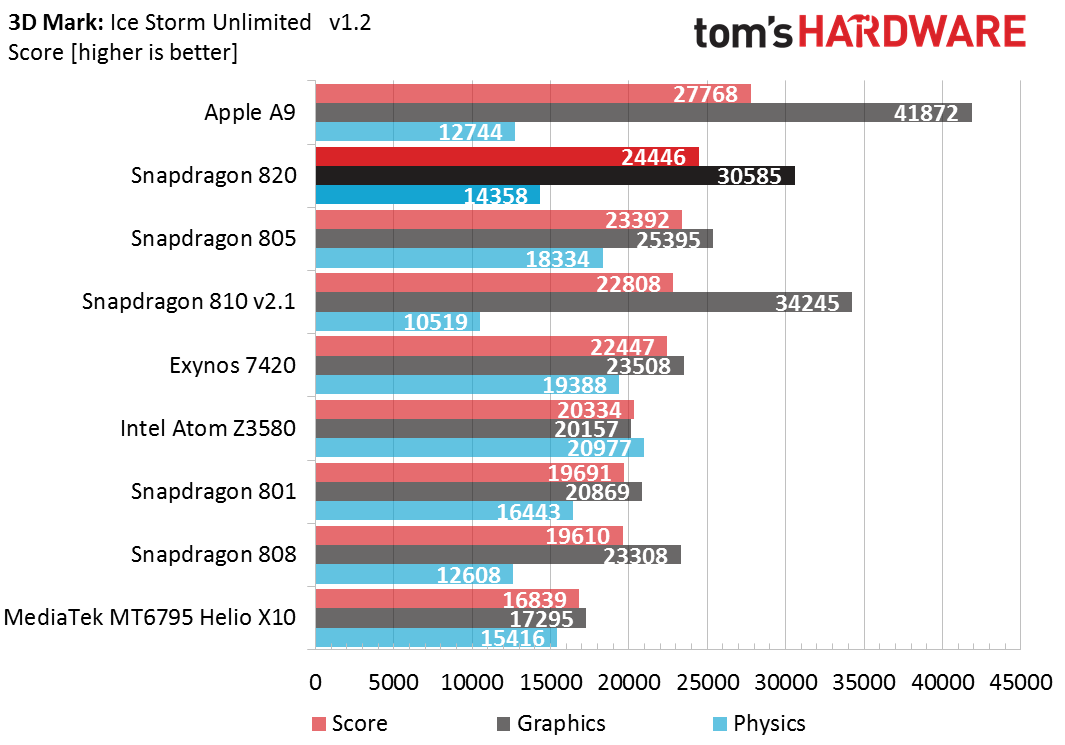Snapdragon 820 Performance Preview
GPU And Gaming Performance
In the previous section, we saw Snapdragon 820 excel in the sequential memory bandwidth tests, which should help boost overall GPU performance. With memory bandwidth a less likely bottleneck, will a weak point emerge in the Adreno 530’s architecture? Will it show an increase in ALU performance like we expect?
In 3DMark Ice Storm Unlimited, the Adreno 530 in Snapdragon 820 falls behind the PowerVR GT7600 GPU in the A9 and even the older Adreno 430 in Snapdragon 810. Curiously, the Adreno 530 trails the 430 in both pixel- and vertex-heavy workloads. As we will see, however, these results are an outlier. Because of the Snapdragon 820 MDP’s pre-production status, this could simply be a quirk of an early revision graphics driver.
The 3DMark Physics test focuses on CPU performance and, like the AndEBench Memory Latency test, uses a data structure with randomized elements. This is why we see all of Qualcomm’s most recent SoCs, including the 808, 810, and 820, along with Apple’s A9, perform poorly. Their memory controllers are optimized for orderly, sequential memory access.
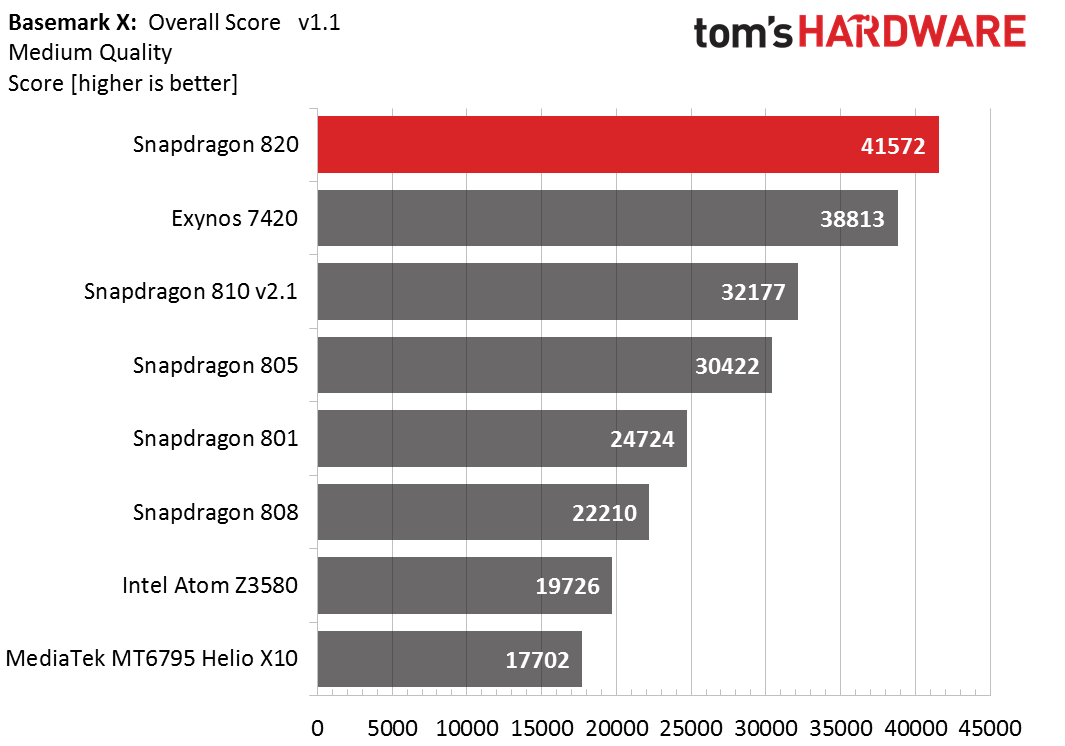
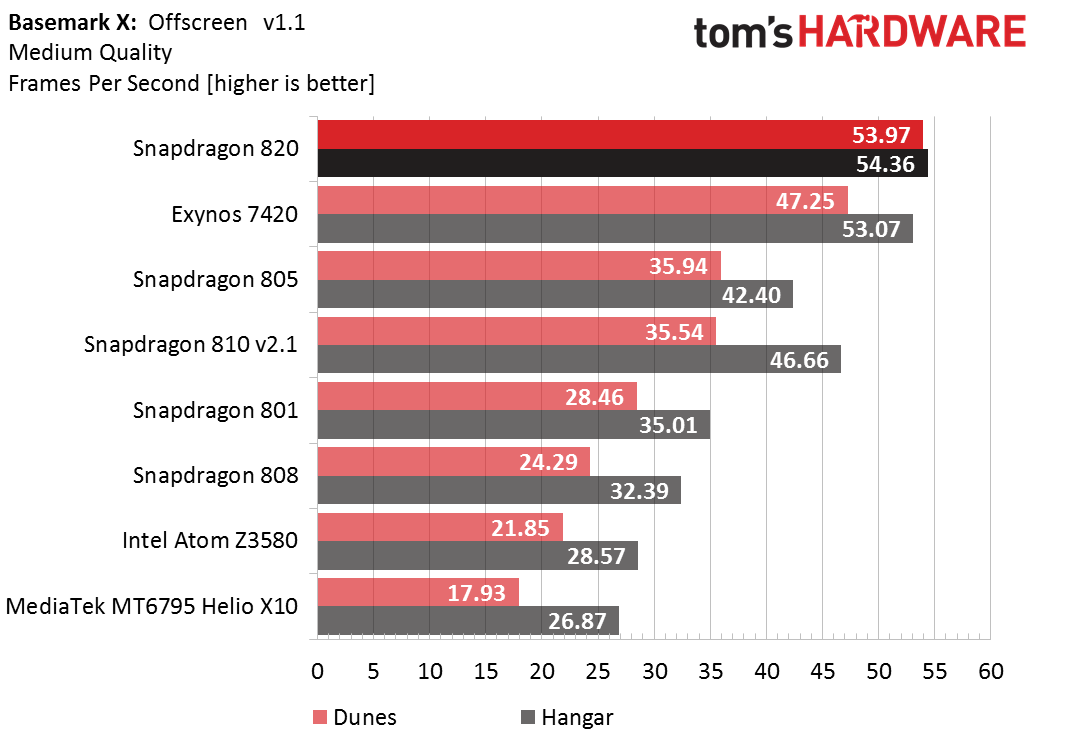
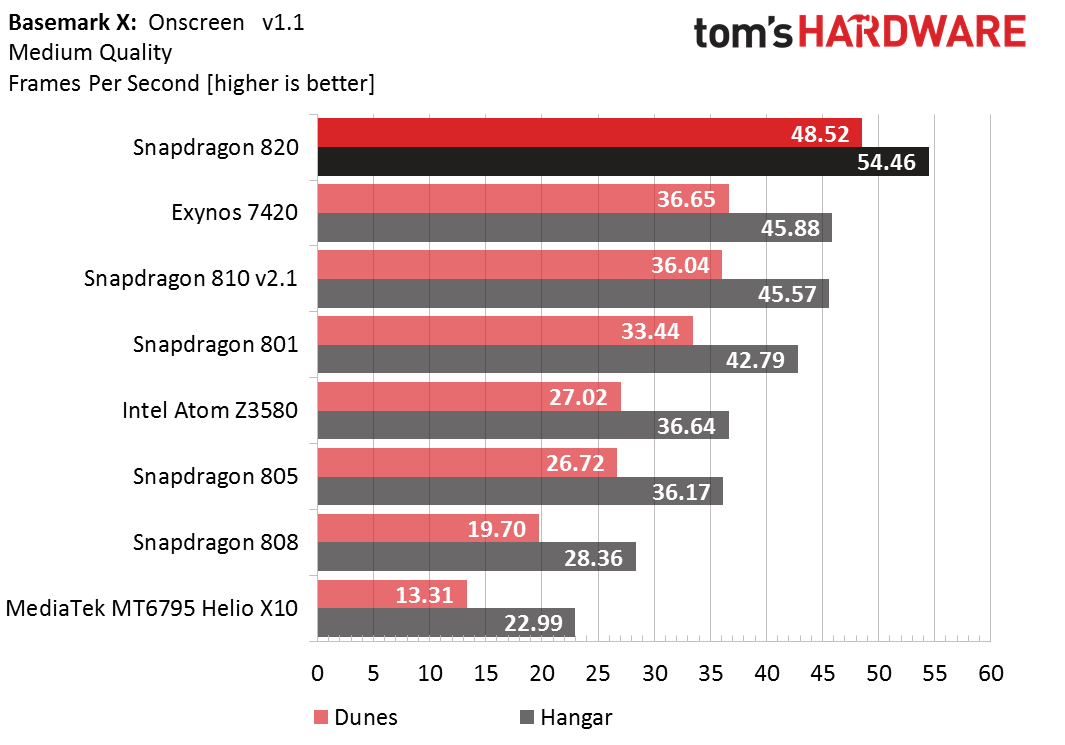
Snapdragon 820 fares better in Basemark X, with a 29% advantage over the Snapdragon 810 and a slim 7% advantage over the Exynos 7420. Most of the Adreno 530’s advantage comes from the Dunes test, which is heavily skewed towards vertex processing. Historically, Qualcomm’s Adreno GPUs have always been stronger with pixel operations, with vertex processing a relative weak point compared to other GPUs. It looks like the Adreno 530 is a more balanced design.
If you’re wondering why Apple’s A9 is not included here, it’s because Basemark X will not run on iOS 9 due to some API changes.


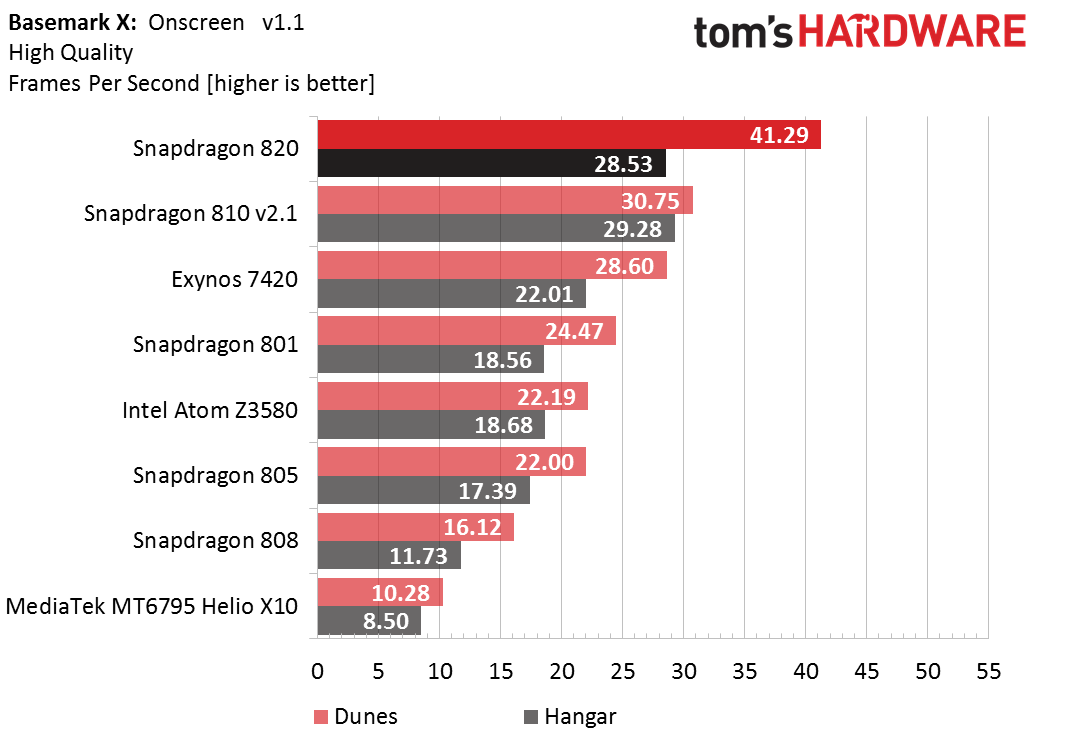
At the high quality setting, Snapdragon 820 flexes its memory bandwidth muscles and extends its performance lead to 57% over Snapdragon 810 and 30% over the Exynos 7420. Even in the onscreen tests, where the Snapdragon 820 is processing more pixels than any other device in these charts, the Adreno 530 performs well, which makes it suitable for the high-resolution QHD screens common in smartphones today.
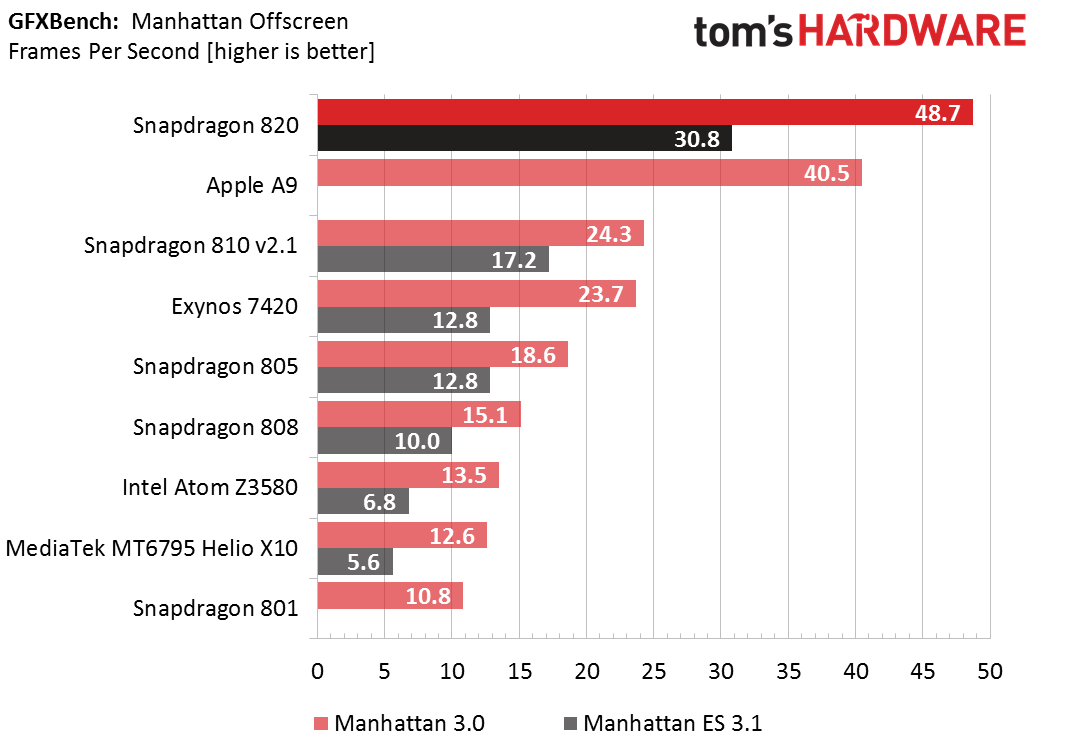
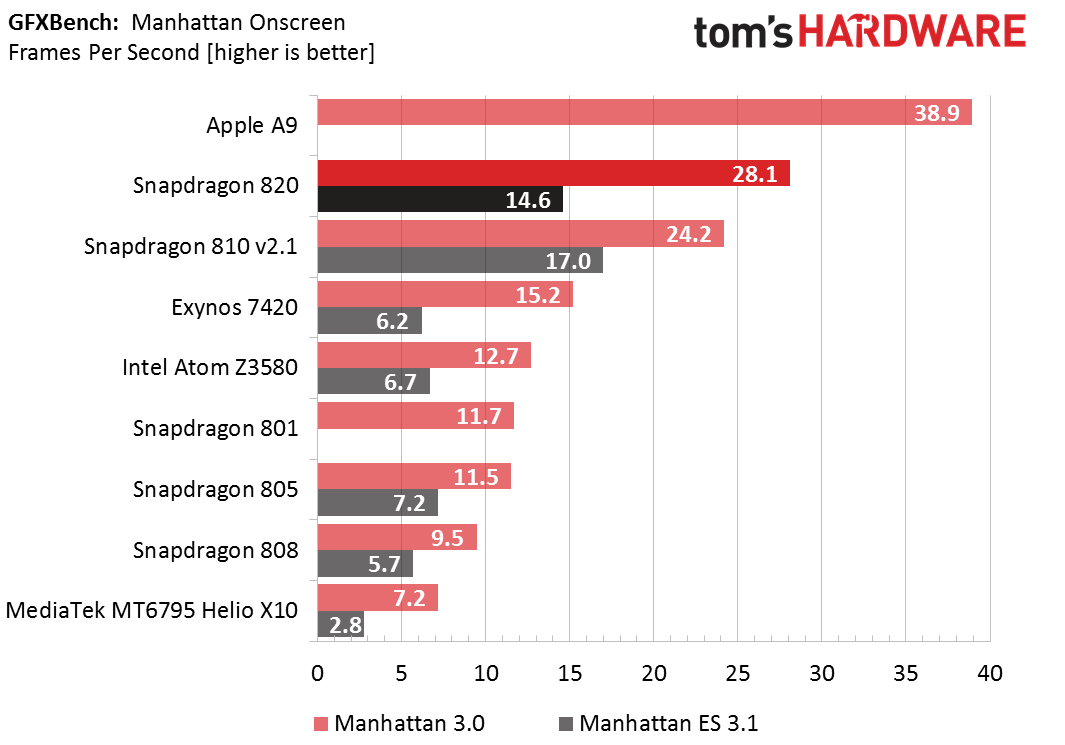
We ran two different versions of the GFXBench Manhattan test. The older Manhattan 3.0 version runs an OpenGL ES 3.0 based game engine, with an abundance of lighting and pixel effects. Looking at the offscreen results we see that the Adreno 530 doubles the performance of both the Adreno 430 in Snapdragon 810 and the ARM Mali-T760MP8 in Exynos 7420. It’s even 20% faster than Apple’s A9.
Get Tom's Hardware's best news and in-depth reviews, straight to your inbox.
Manhattan 3.0 uses deferred rendering for its lighting effects, which is highly dependent on screen resolution. This is why the iPhone 6s Plus (A9) and OnePlus 2 (Snapdragon 810) move up the chart when rendering onscreen: both have native 1920x1080 displays compared to the 2560x1600 display on the Snapdragon 820 MDP.
Manhattan 3.1 is an enhanced version of the Manhattan test utilizing OpenGL ES 3.1 features. Snapdragon 820’s performance advantage in this test is quite impressive; it’s 79% faster than the Snapdragon 810 and 2.4x faster than the Exynos 7420.
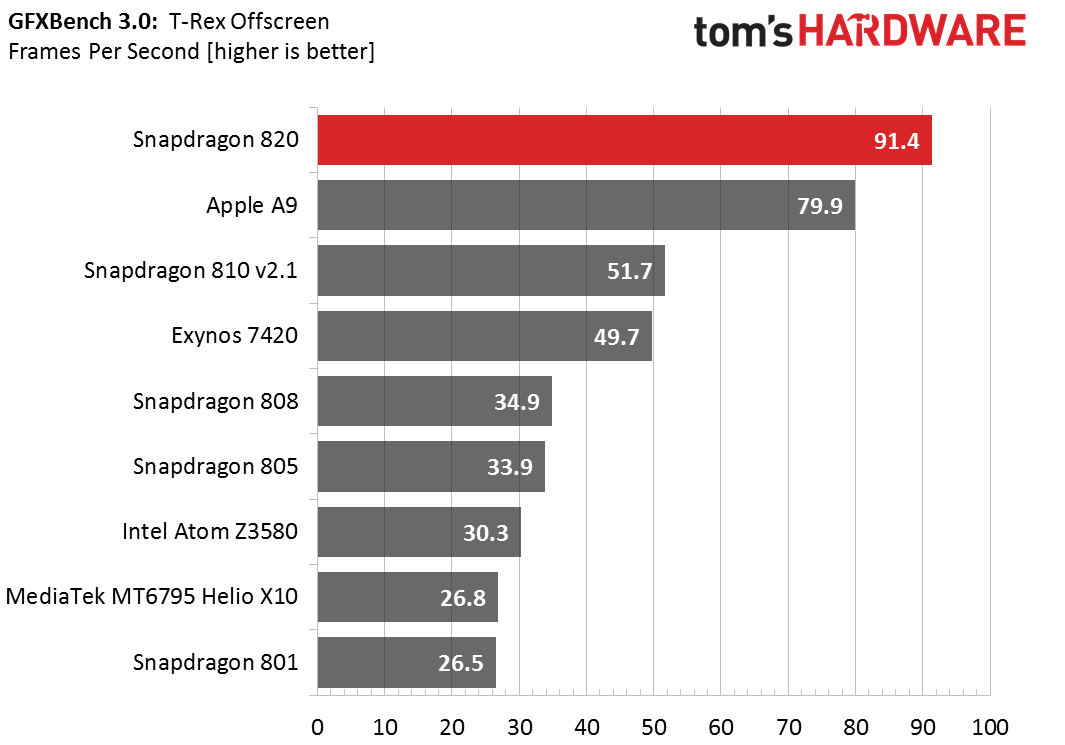
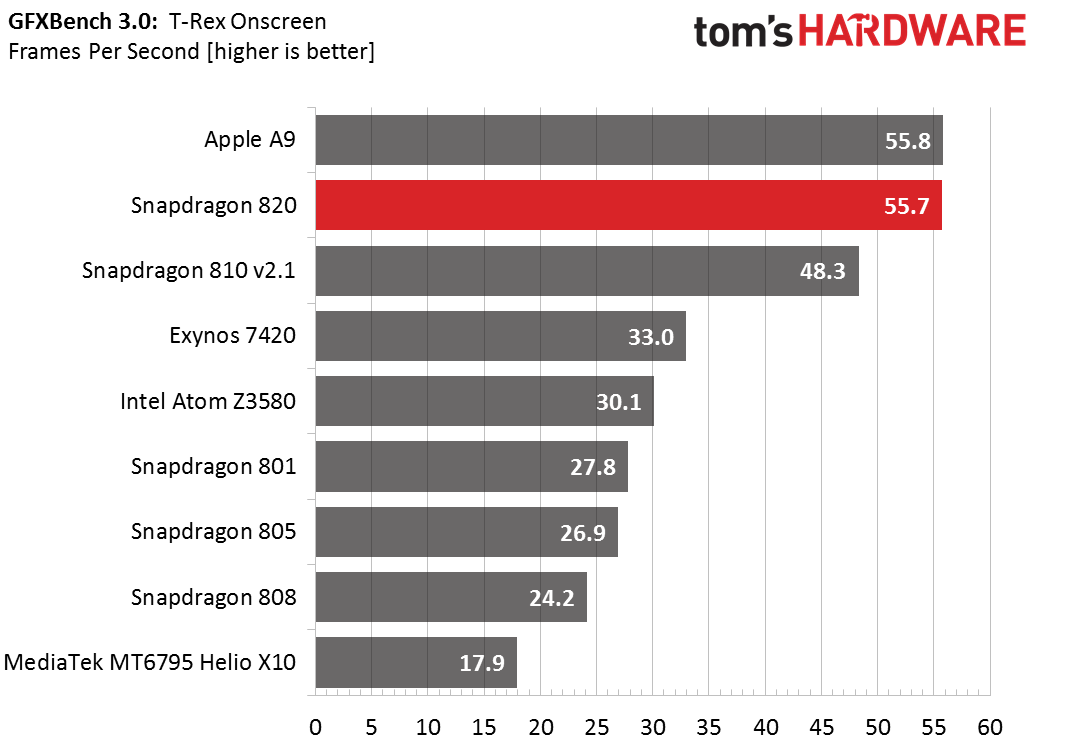
While the Manhattan tests emphasize pixel shading, the OpenGL ES 2.0 based T-Rex game simulation uses a more balanced rendering pipeline. Once again the 820 offers an impressive boost over the 810, this time around 77%. The 820 even beats Apple’s best offering by 14%, which held a stranglehold on T-Rex for some time.
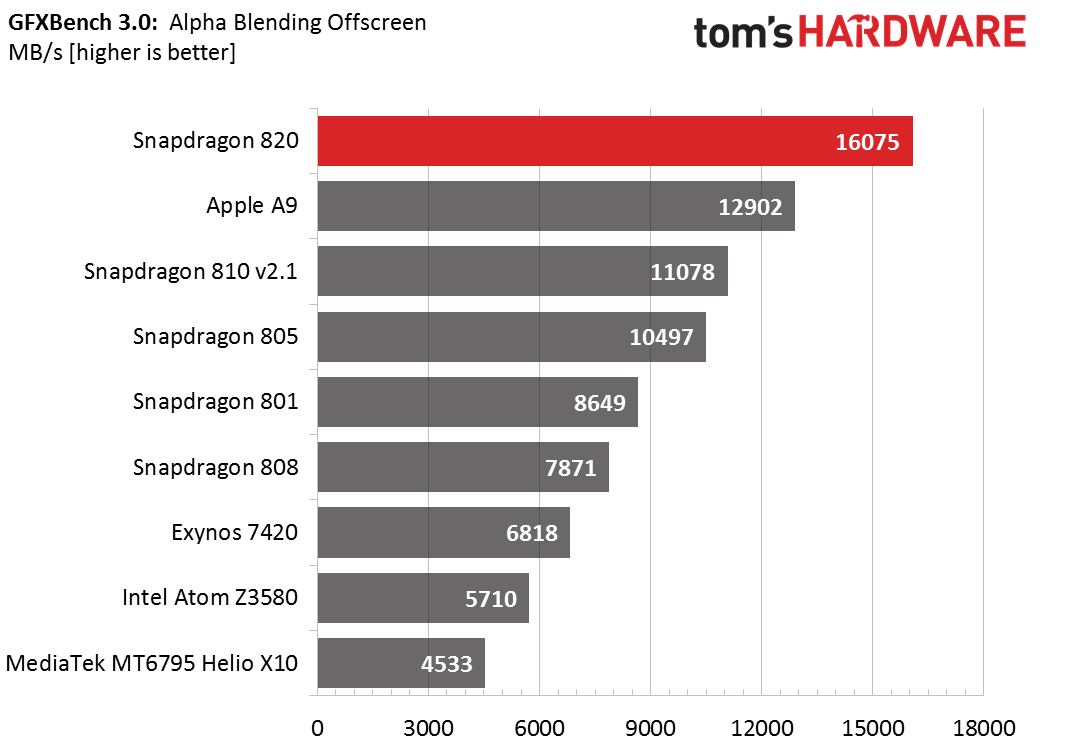

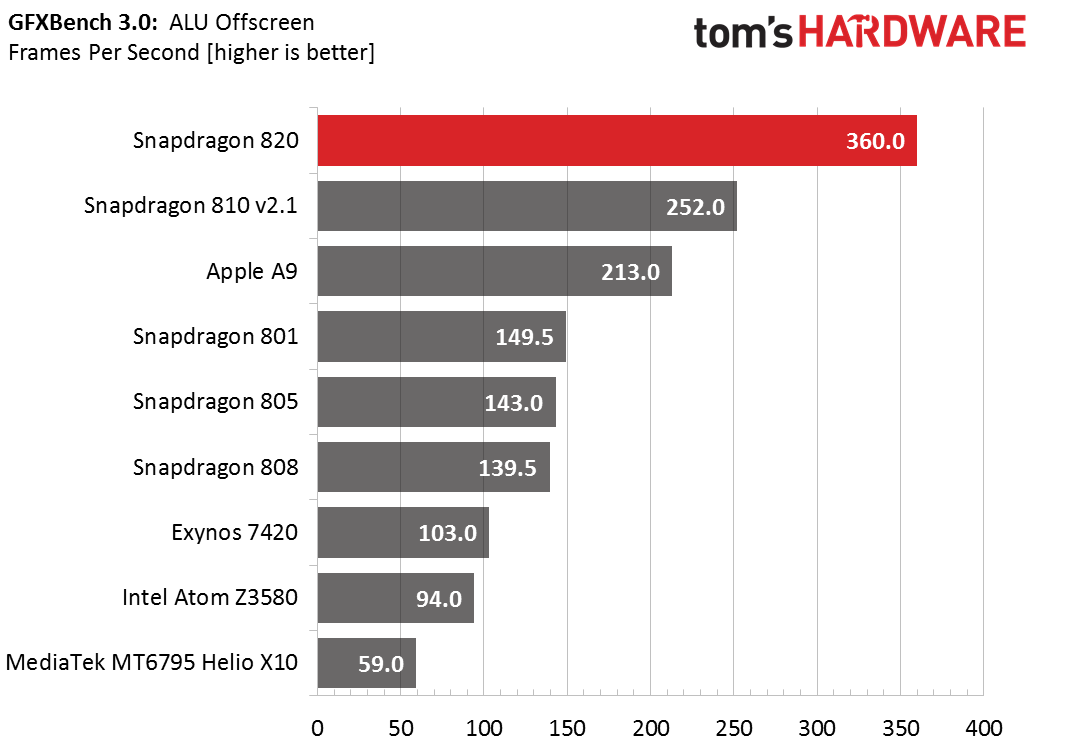
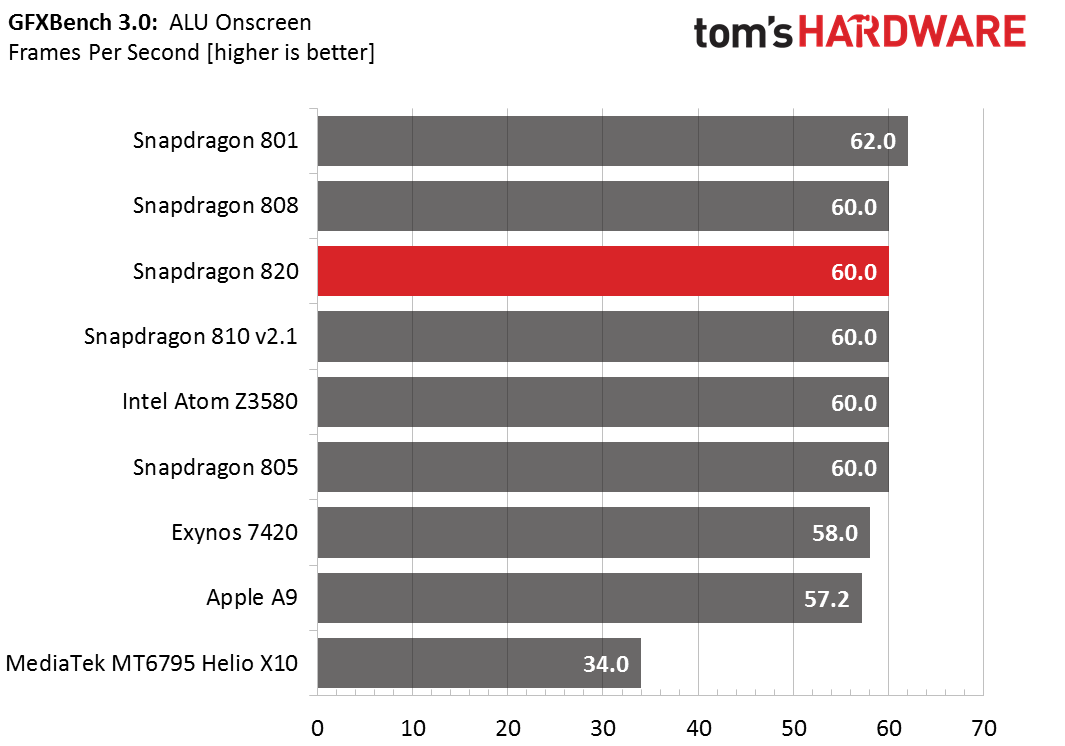
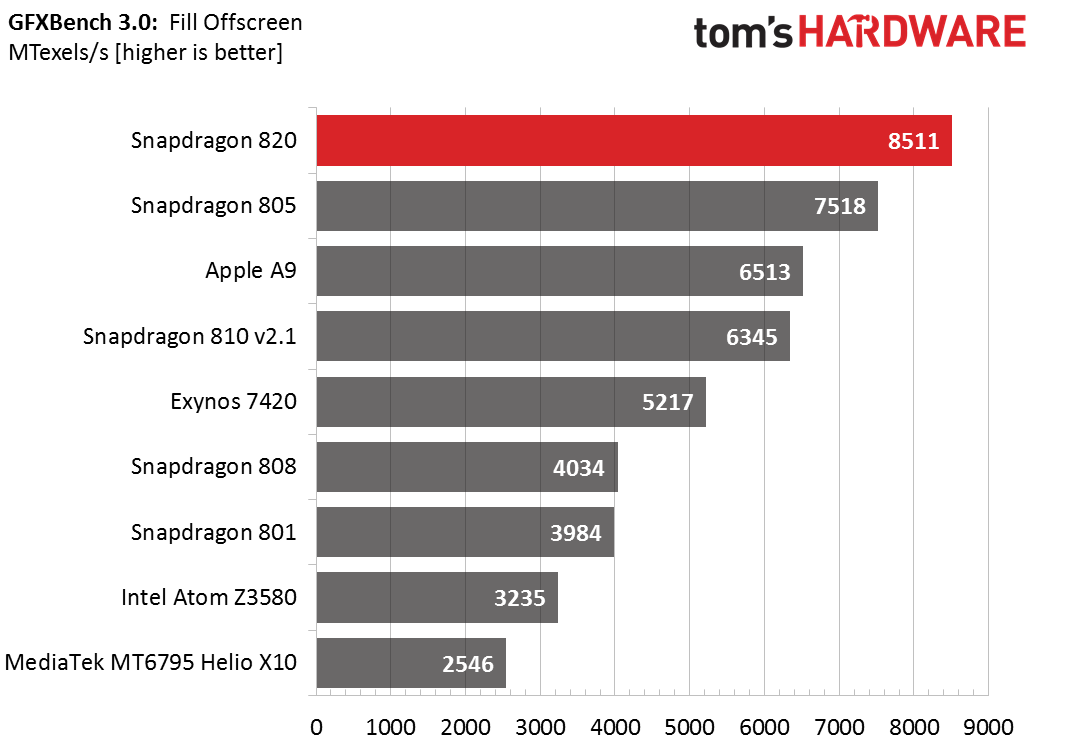


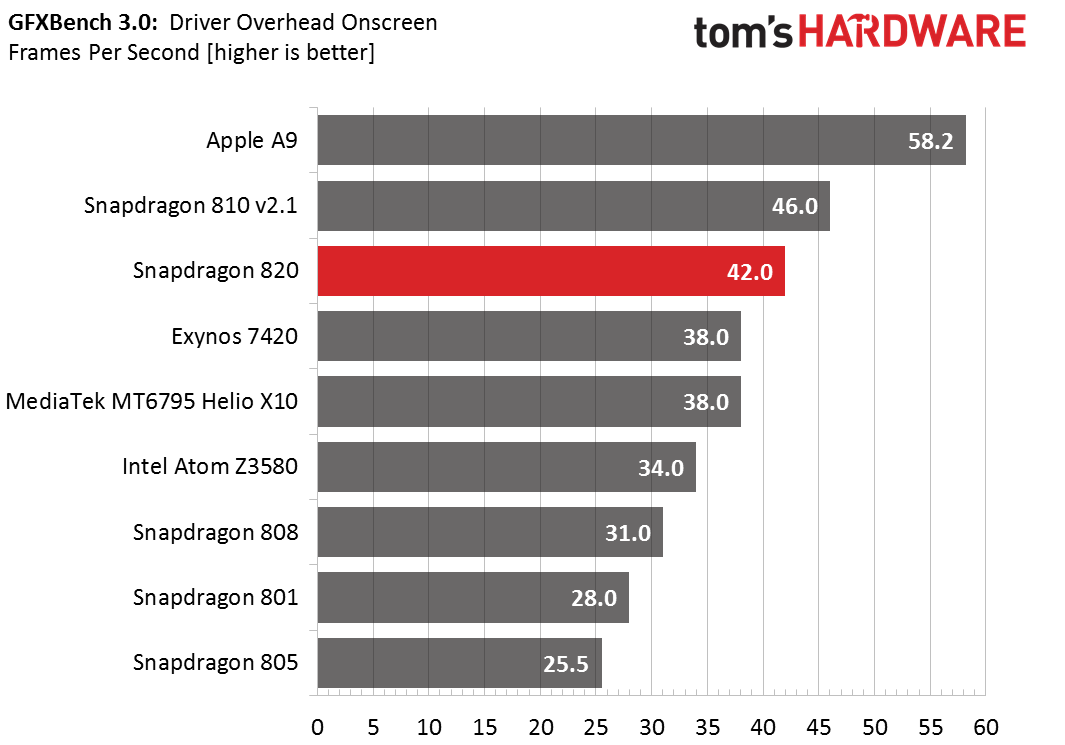

The GFXBench Alpha Blending test stresses rasterization and memory bandwidth. Given the 820’s excellent memory performance, it’s no surprise to see it rise to the occasion, beating Apple’s A9 by 25%. The Fill test also stresses memory bandwidth, in addition to pixel processing, both of which play to the 820’s strengths.
Qualcomm has been improving ALU performance in its Adreno GPUs for several generations now, and the Adreno 530 is no exception. Unfortunately, we cannot say for sure if the 530 includes additional ALUs or even estimate total GFLOPS, because we cannot separate the individual contributions of the ALUs and memory bandwidth from their aggregate performance. All we can say is that Snapdragon 820 delivers 43% better ALU performance than the 810 and that a good chunk of this likely comes from the increase in memory bandwidth. ALU performance is critical to Qualcomm’s heterogeneous computing vision, and it looks like the Snapdragon 820 is well equipped to execute it.
Current page: GPU And Gaming Performance
Prev Page CPU And System Performance Next Page Final Thoughts-
blackmagnum ...so, Apple's the Intel of the mobile cpu world, while Qualcomm's the AMD. One brings the performance while the other offers better value.Reply -
donjay No, Apple is not Intel of the CPU world.Reply
Apple is not actively sabotaging Android devices by offering subsidies to Android Tablet and Phone manufacturers. -
megamanxtreme I really hope that the 820 is not as hot as the 810 gets, if not, I'll have to wait for the 830. I found the 950XL having to need a liquid cooler an insult.Reply
Until then, I'll survive with the 800 on my Lumia 1520.
Actually, to blackmagnum, Qualcomm is being rumored to pay companies to include their processors, not sure if they are paying to exclude the competition, but it sounds similar to what Intel did to cut-off AMD on a lot.
Found an article: http://www.zdnet.com/article/eu-to-qualcomm-youve-been-paying-to-shut-out-rival-chip-makers/ -
LordConrad ReplyNo, Apple is not Intel of the CPU world.
I believe he meant it in terms of performance.
Apple is not actively sabotaging Android devices by offering subsidies to Android Tablet and Phone manufacturers. -
nitrium ReplyNo, Apple is not Intel of the CPU world.
Apple also doesn't allow anyone other than Apple to use their CPU... exactly UNLIKE Intel, who lets anyone use their chips in any device you can dream up.
Apple is not actively sabotaging Android devices by offering subsidies to Android Tablet and Phone manufacturers.
-
monsta look forward to seeing the 820 in the next flagship phones , if the numbers are correct on paper it's going to be a great chipReply -
jasonelmore Apple's CPU Cores are clocked quite a bit higher than the 820 in these test.. Also the Adreno GPU is kicking apple's a9 butt.Reply -
ZolaIII Looks like S620 will be lovely.Reply
Actual splitting the Kryo cores in two clusters whose a dumb move.
They will certainly get a performance edge in real usage where 2 cores are mostly sufficient enough (Web, apps) but in cases where you need more it will even be under the S620 so that's shooting in their own feat.
I am not impressed with Spectra or QDSP but I am impressed with GPU performance.
So in summary if they don't blow with GPU on S620 along with pricing they culd stay in the game as S620 could be a wonderful mainstream SoC all well balanced otherwise it will be a game over for them.
I won't be crying for them as I didn't for Texas Instruments or Broadcom that they pushed out (that they will finally pay for) but truth is if they go down we are all without any open stock (I don't count Exunos as one more OEM ever used them). -
wh3resmycar all those processing power for what? sending a d*ck pic in snapchat? smartphone performance has been so much saturated since the snapdragon s4. i'd take this 820 @ half the clocks plus 5000mah of battery in a smart phone because running your phone longer in the day makes more sense than any other gimmicks out there.Reply -
daniel_103 Reply17105501 said:all those processing power for what? sending a d*ck pic in snapchat? smartphone performance has been so much saturated since the snapdragon s4. i'd take this 820 @ half the clocks plus 5000mah of battery in a smart phone because running your phone longer in the day makes more sense than any other gimmicks out there.
So true! Is the first time when i read a good comment and a very real. This is a question that many people should think about... Are we use our smartphones for playing video games or for the real communications and network connection? What do people want from a smartphone? You expecting to run AutoCAD on your smartphone, or 2 days without recharge and full network?
